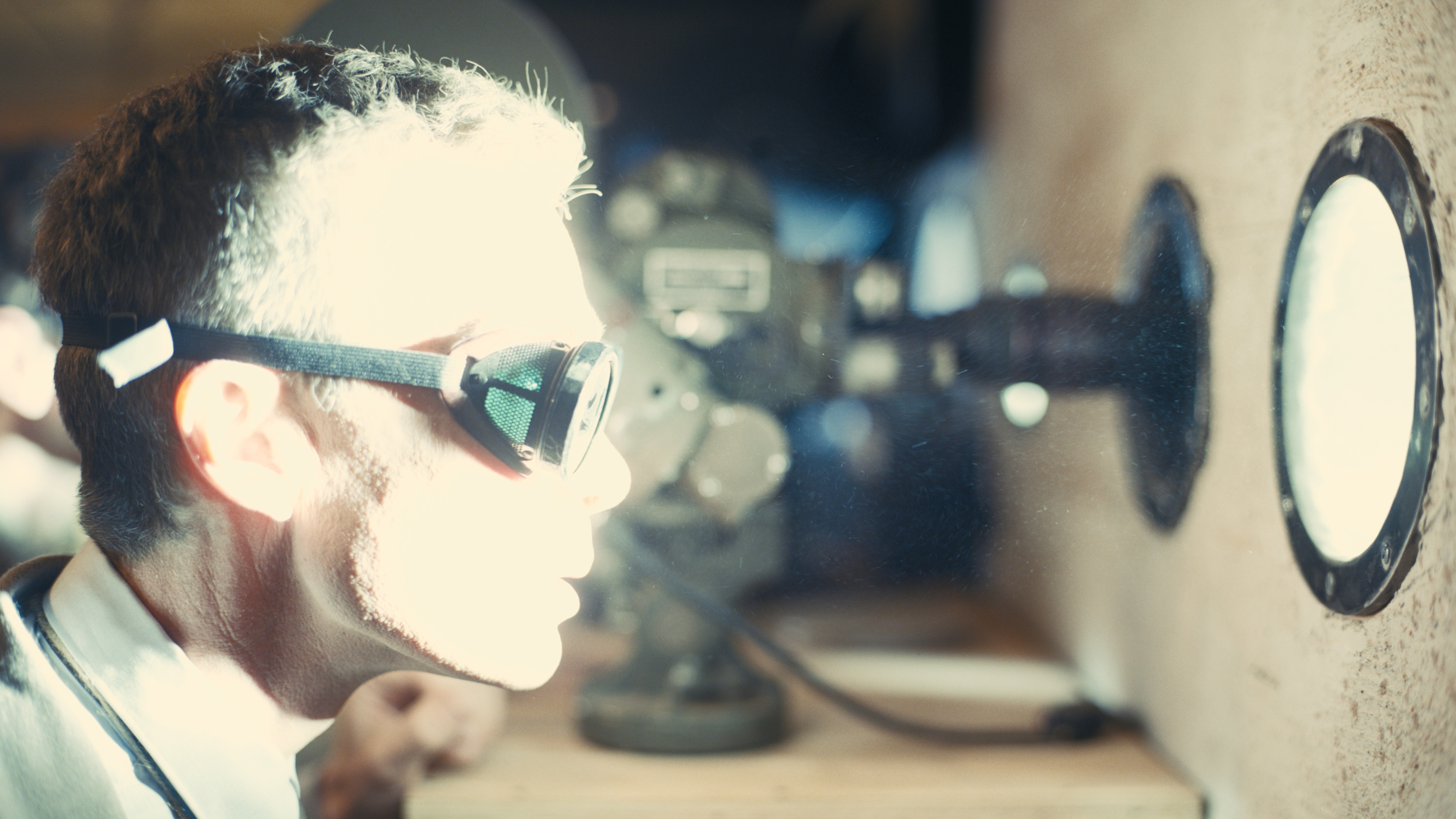Did Christopher Nolan recreate the atomic bomb in Oppenheimer?
How did Oppenheimer reproduce the atomic bomb test?

Though Christopher Nolan's Oppenheimer can accurately be described as part character study of the father of the atomic bomb and part political thriller about the aftermath of such a weapon entering the global conversation, the big moment of the movie is undoubtedly the first moment the bomb is tested.
It feels pretty safe to say for anyone who has watched Oppenheimer, seeing the Trinity Test brought to life on screen was a jaw dropping moment. So much in fact that you may be wondering did Christopher Nolan recreate the atomic bomb for the movie?
Considering Nolan is famous for flipping semi-trucks (The Dark Knight) and choreographing a fight sequence in an actual spinning hallway (Inception) without the aid of computer-generated images (CGI), it should come as no surprise that Oppenheimer's Trinity Test was done entirely with practical effects.
Now Nolan has used CGI to create a nuclear explosion before, specifically at the end of The Dark Knight Rises. But as Nolan said in multiple interviews, while CGI is "extremely versatile" and "unparalleled" in some aspects, it was not what he needed for Oppenheimer.
Speaking at a special event on July 15 commemorating the anniversary of the Trinity Test, Nolan said about the explosion at the end of The Dark Knight Rises, "it's meant to feel like it's far away enough that it's not going to affect you… so you're actually mean to have a sense of 'OK, we got away with it.'"
"But coming to portray the Trinity Test," he continued, "it was like, 'OK, this has to feel dangerous. This has to feel beautiful and terrifying in equal measure,' and real world imagery, real world things I think have that bite."

So to try and achieve this beautiful and terrifying moment, Nolan relied on his visual effects supervisor Andrew Jackson and special effects supervisor Scott Fisher. In an interview with What to Watch's sister publication Total Film, Fisher explained that they used forced perspective.
The latest updates, reviews and unmissable series to watch and more!
"We don't call them miniatures; we call them 'big-atures,'" he said. "We do them as big as we possibly can, but we do reduce the scale so it's manageable. It's getting it closer to the camera, and doing it as big as you can in the environment."
When it came to creating the actual explosion, Fisher said they used a combination of gasoline, propane, aluminum powder and magnesium to create both the blinding light of the blast and the tower of fire.
Talking with IGN, Nolan explained what he thinks doing this for real added to the movie:
"We were out there in the desert of New Mexico just like the scientists of the Manhattan Project. We built the bunkers, we built the tower, we were out there at night preparing for these very large scale explosive events that have to be conducted safely with great care. So there's a tension, there's an anticipation in what we're doing as filmmakers that I think helps the actors, helps everybody gain some small understanding of what it must have been like there that night, that early morning in the Trinity Test."
It truly is a sight to behold on the big screen.
Oppenheimer is now playing exclusively in movie theaters. Read our Oppenheimer review to find out why we think it is a must-see movie.

Michael Balderston is What to Watch’s assistant managing editor and lead movie writer, , writing movie reviews and highlighting new and classic movies on streaming services; he also covers a range of TV shows, including those in the Taylor Sheridan universe, Slow Horses, Only Murders in the Building, Jeopardy!, Saturday Night Live and more, as well as the best ways to watch some major US sporting events.
Based outside of Washington, D.C., Michael's previous experience includes writing for Awards Circuit, TV Technology and The Wrap.
Michael’s favorite movie of all time is Casablanca, while his favorite TV show is Seinfeld. Some 2025 favorites include Sinners, One of Them Days and Black Bag for movies, and The Pitt on TV. Follow on Michael Balderston on Letterboxd.

